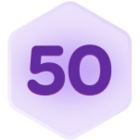We’re advancing into the last week of the custom blocks contest (Submission deadline: July 6). This will be our last AMA in this series - with a twist! We’re turning it around to you: Ask You Anything (AYA).
We’d be interested to hear from you about one rose, one bud, and one thorn of your custom blocks beta experience so far. To be more specific:
Rose: Something that delighted you about the platform
Bud: Something new that the custom blocks platform unlocked for you, whether it’s a new workflow or new value in Airtable
Thorn: What is your top feature request or challenge that you ran into?
The thread is open for the next week and the 3 most insightful posts will win a $40 Amazon giftcard. Feel free to keep it under a sentence each. A member of the Airtable platform engineering team will select the winner at the end of day on Thursday (7pm PT).





